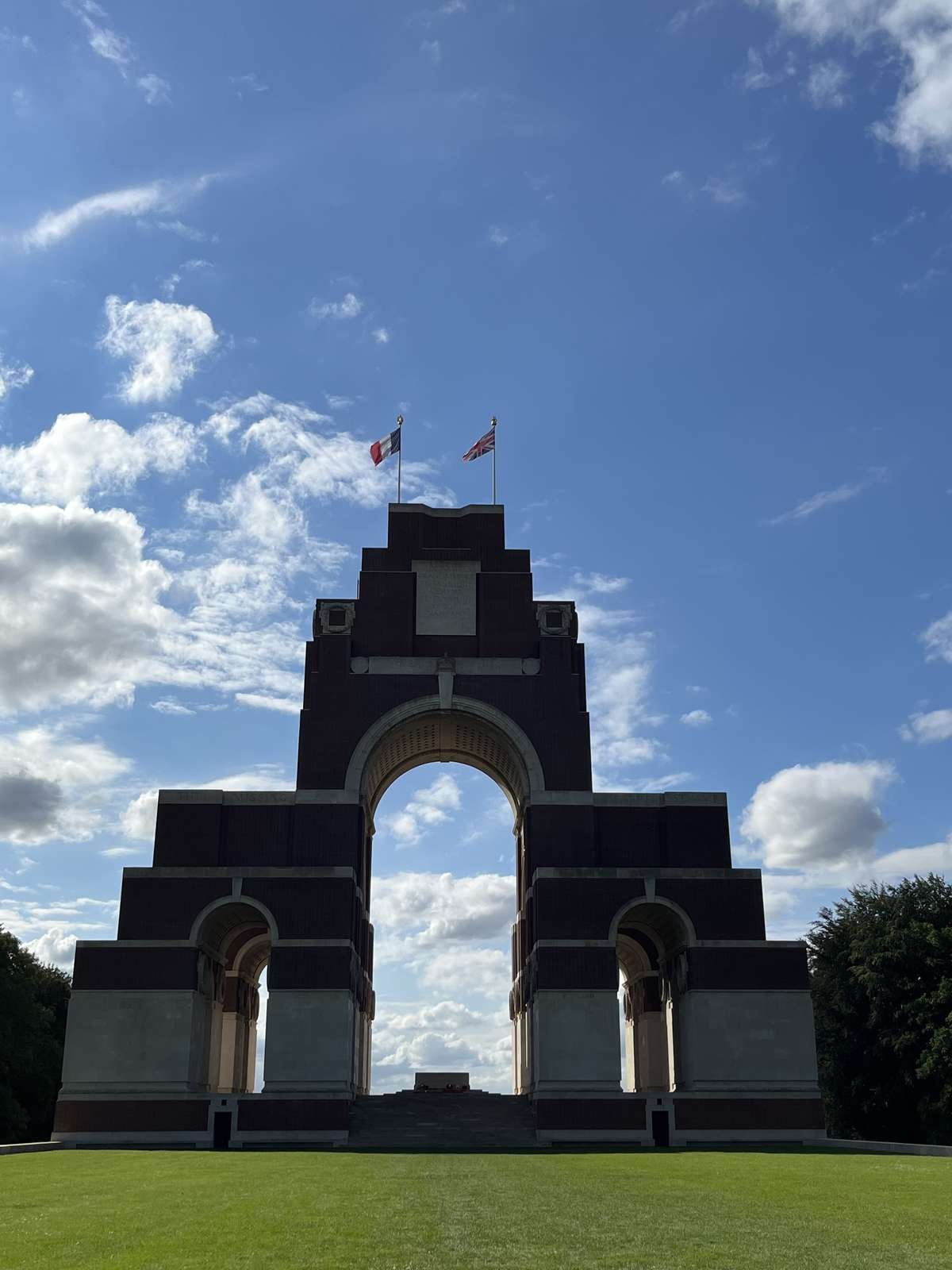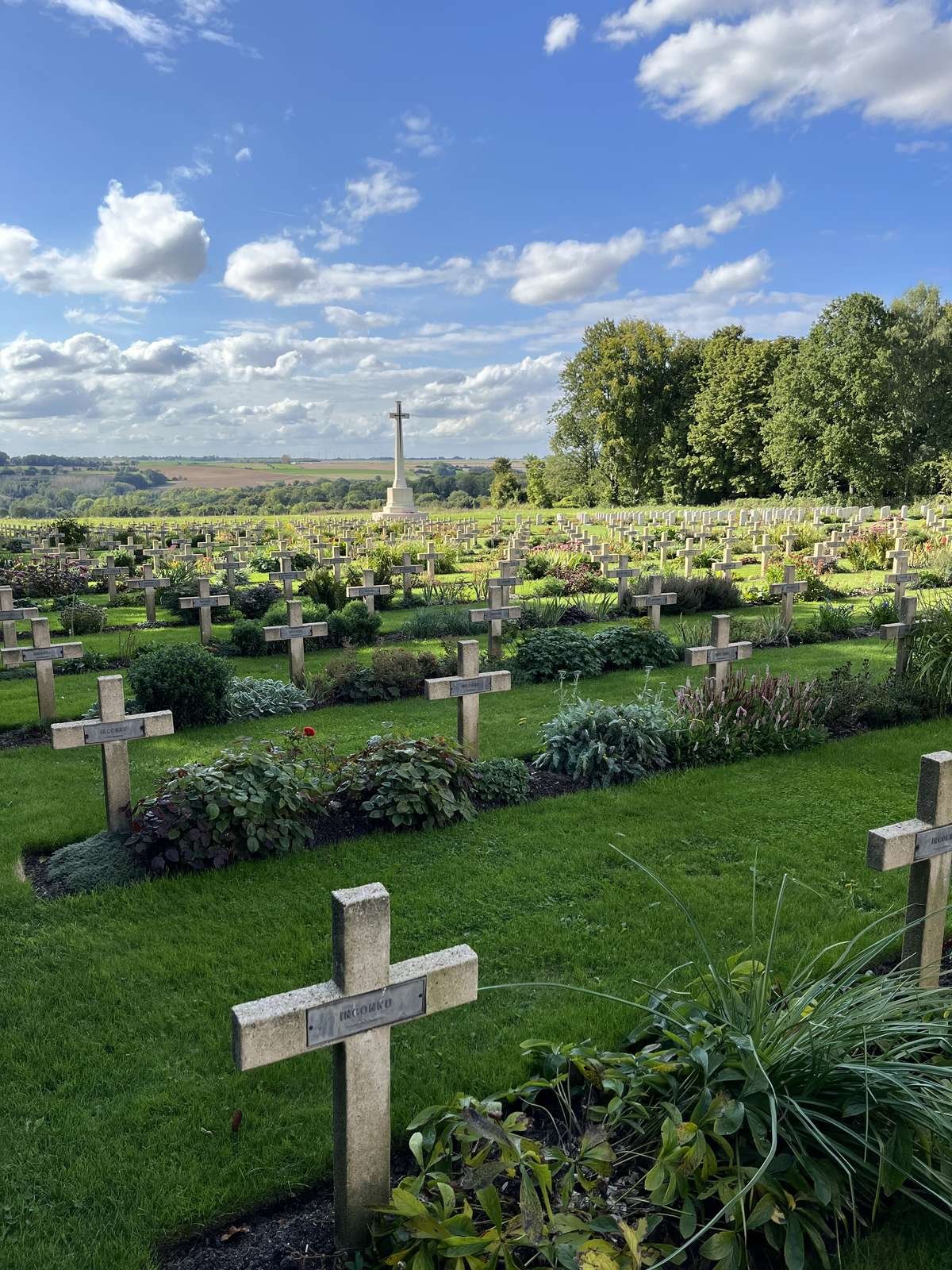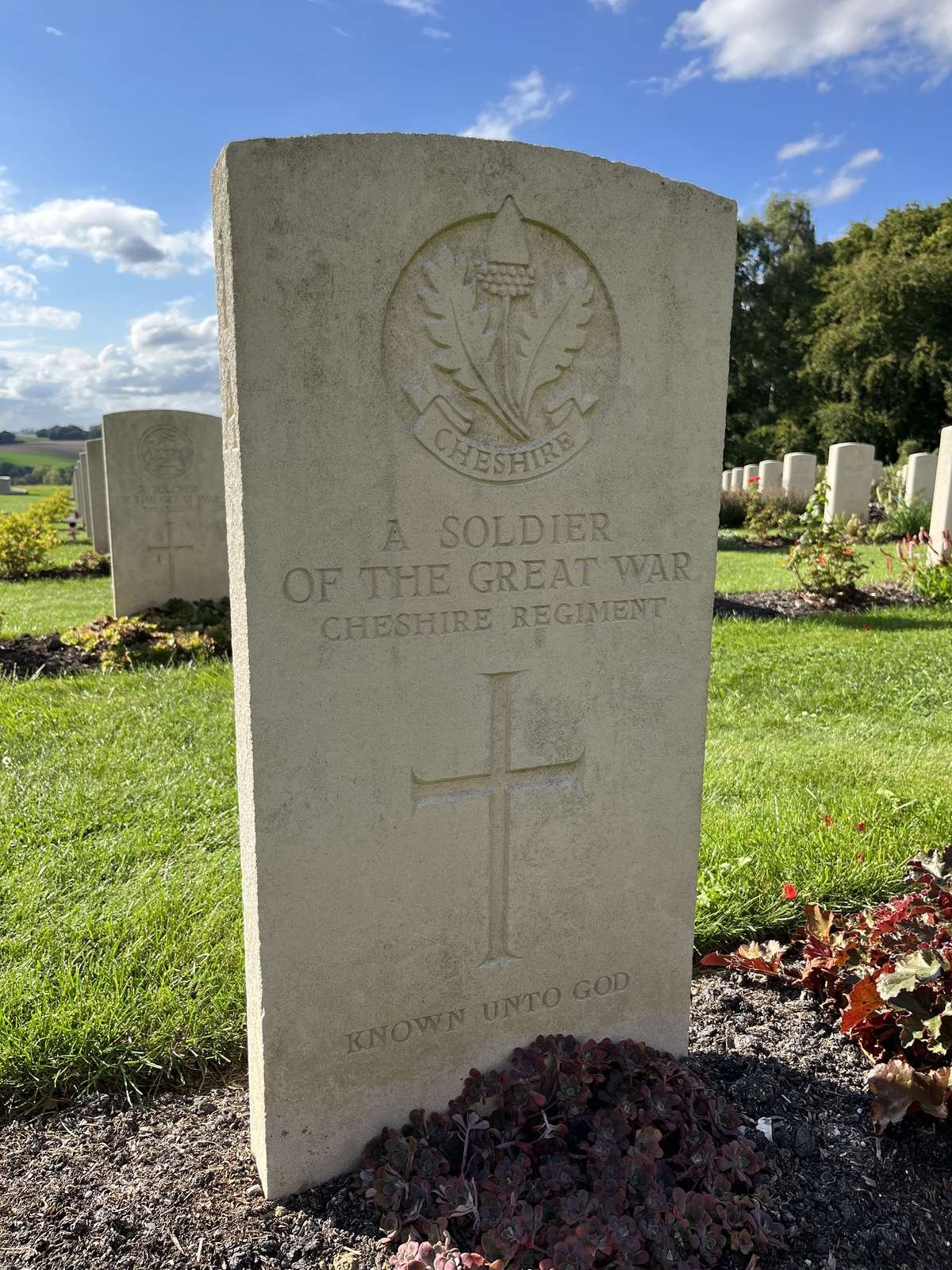
My Whistle-Stop Tour of WWI sites
A few years ago, my brother and I were discussing what to get our elderly parents for Christmas. He made the excellent suggestion of arranging and accompanying them on a short trip to Europe to visit WWI sites. The trip was planned and postponed multiple times due to lockdowns and various other reasons. But in September 2023, it finally came together.
This blog is about the places we visited, so if you are considering such a trip, it might give you some inspiration. Or, if you don’t fancy planning your own trip, there
are lots of coach trips from the UK with knowledgeable guides, that will take you to the main sites.
are lots of coach trips from the UK with knowledgeable guides, that will take you to the main sites.
Day 1
After a night in Folkestone, we took an early departure with the Eurotunnel over to France and then drove about 80 minutes to reach the Canadian National Vimy Memorial (pictured below).
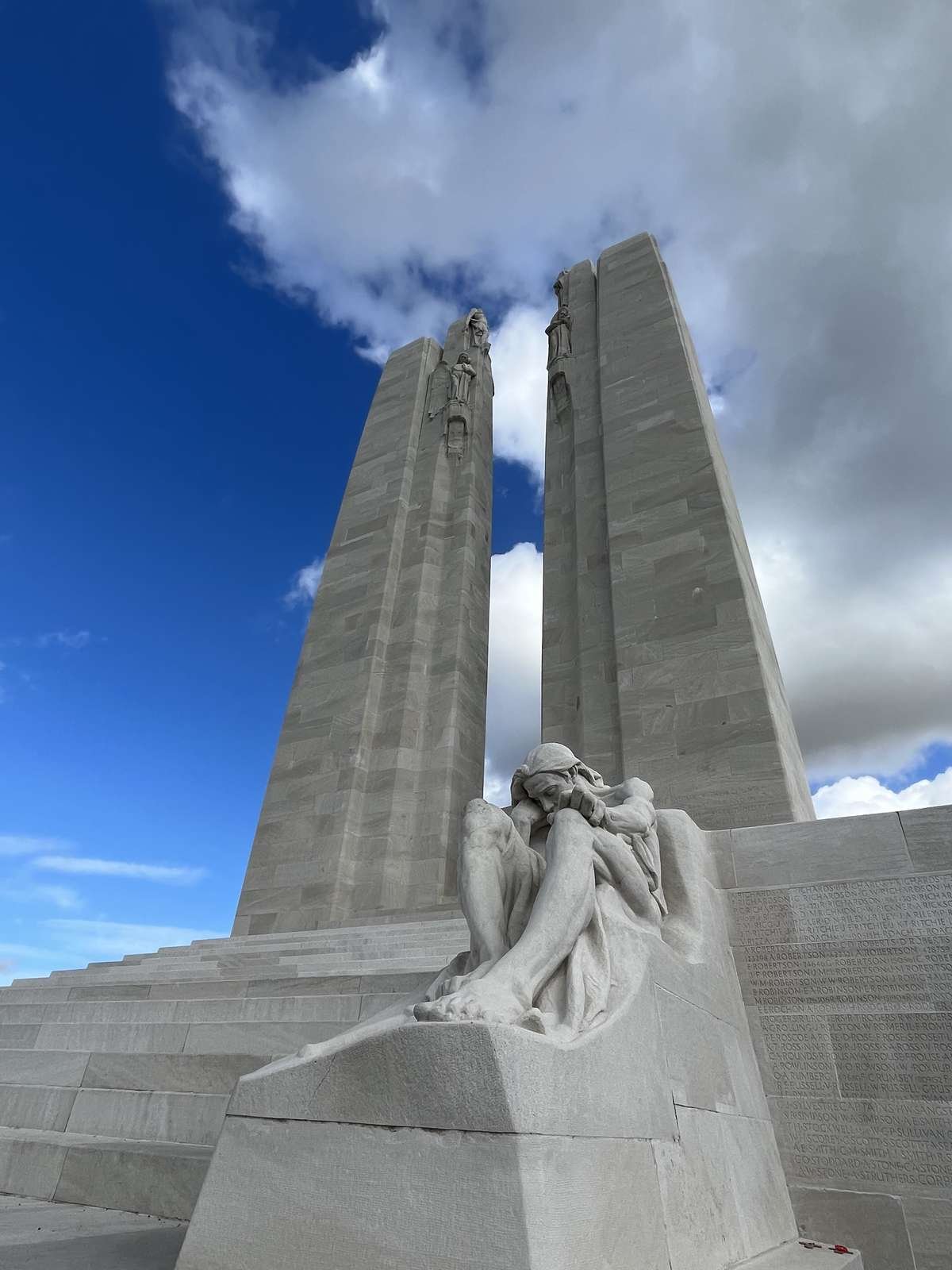
Britain called up troops from all over her empire and the Canadians answered the call in large numbers. Over 650,000 Canadians served in WWI, including 2,800 Canadian women who served as nurses. More than 66,000 Canadians paid the ultimate price and did not return and another 172,000 returned wounded.
Not only does the site have an impressive monument on Vimy Ridge, which the Canadian forces took back from the Germans, it also has a modern museum with a wide range of multi-media presentations which bring the stories to life. In addition, there are some trenches, and surrounding area bears the marks of extensive shelling and trench digging.
In the afternoon, after grabbing some baguette for lunch, we visited Thiepval Memorial, which is the largest Commonwealth war memorial in the world. It bears the names of more than 72,000 British and South African servicemen who died during the First World War and have no known grave. Also at this site is a museum which is well worth a visit.
After a long day, we then drove to the French city of Amiens and we decided to stop by the Lochnagar Crater. According to our WWI guidebook, the massive
crater was caused by the British Forces tunnelling under the German positions
and laying multiple mines at several locations. All the mines were then set off
at 7:28am on July 1st, 1916. The coordinated detonation of mines
from beneath the German positions greatly assisted the allied forces at the
start of the battle of the Somme.
crater was caused by the British Forces tunnelling under the German positions
and laying multiple mines at several locations. All the mines were then set off
at 7:28am on July 1st, 1916. The coordinated detonation of mines
from beneath the German positions greatly assisted the allied forces at the
start of the battle of the Somme.
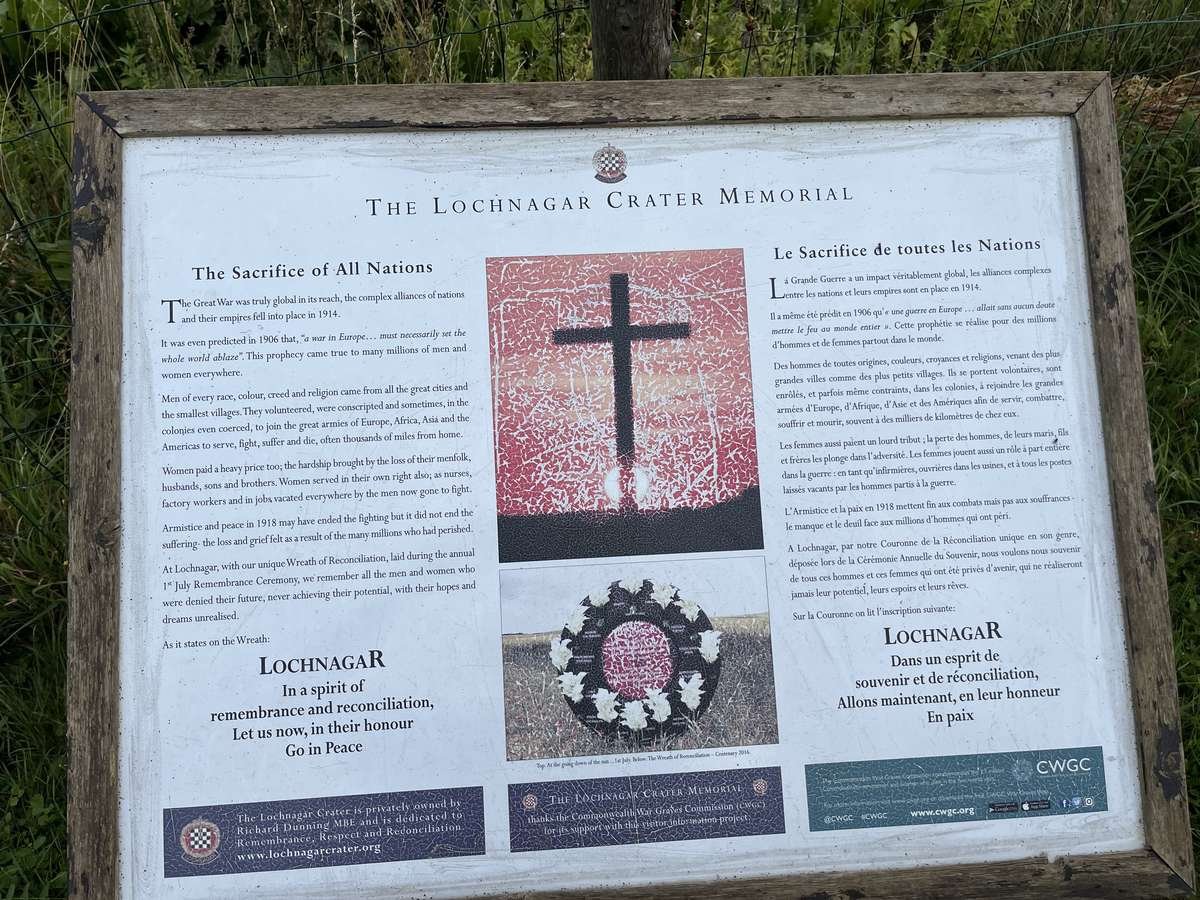
Neither my words nor photos can do this location justice. However, being there in person does bring it to life, thanks to the size of the crater and various information boards describing the reality at the time; of soldiers digging long tunnels, laying explosives, then back filling the tunnels. Then there were the hardships experienced by both the men that dug the tunnels and the troops that went over the trenches after the mines had been detonated.
If you do take a trip, many
guidebooks will have you moving on each day, but we decided to make Amiens our base for two nights. Our city centre accommodation was a few hundred
metres away from the Cathédrale Notre-Dame d'Amiens (pictured below) with lots of fantastic restaurants within strolling distance.
If you do take a trip, many
guidebooks will have you moving on each day, but we decided to make Amiens our base for two nights. Our city centre accommodation was a few hundred
metres away from the Cathédrale Notre-Dame d'Amiens (pictured below) with lots of fantastic restaurants within strolling distance.
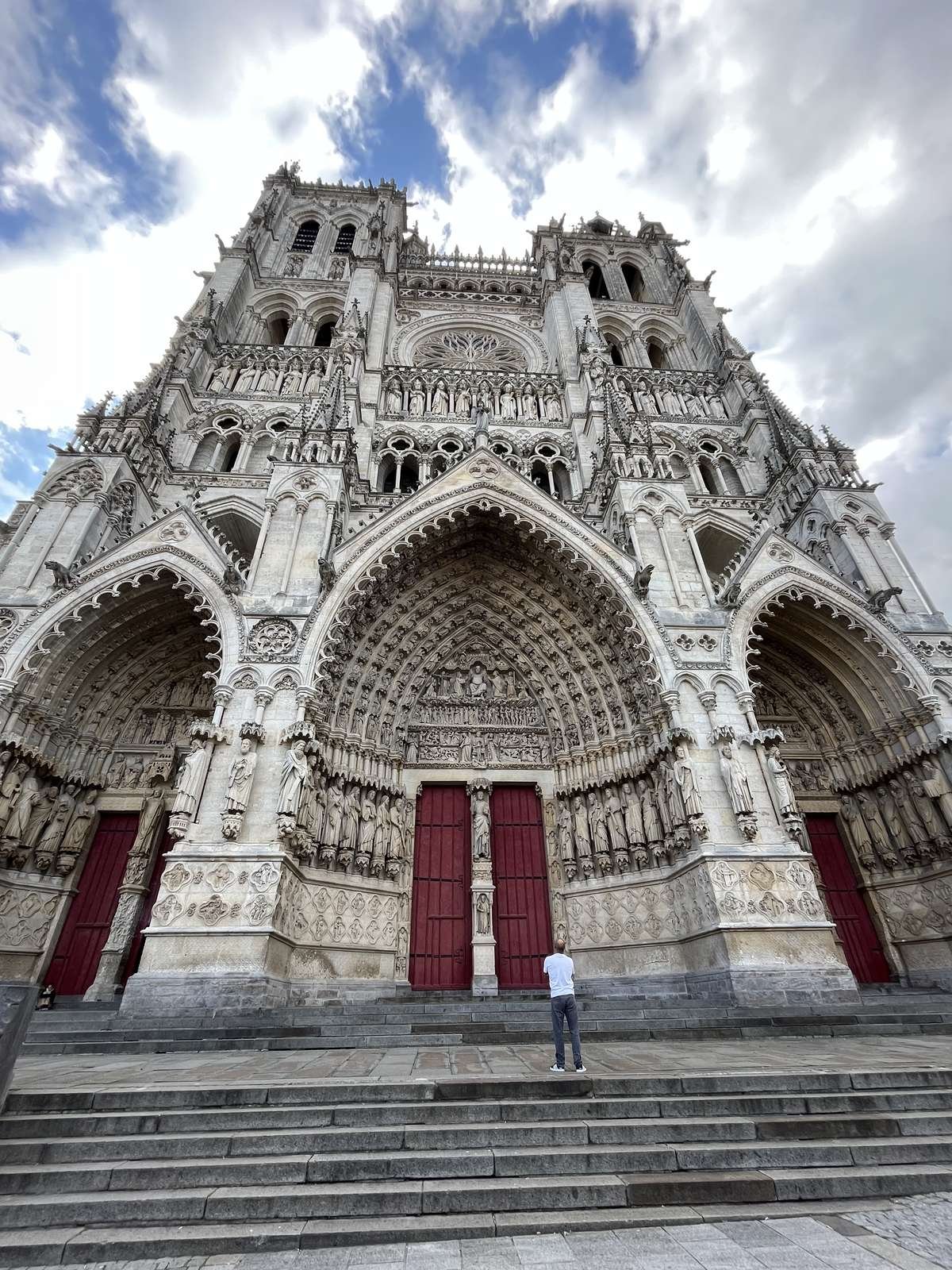
Day 2.
After an 80-minute drive we reached the Memorial de Armistice. This was where the armistice was signed to end the First World War.
In 1918 after the allies had pushed the German forces back a long way and they knew the war was lost, a meeting was arranged to discuss an end to the fighting and the terms and conditions for both sides. Two trains came to a quiet forest, one brought the allied delegation including Marshal Foch, the French commander of the joint allied forces, along with Rear-Admiral George Hope, Deputy First Sea Lord and Captain Jack Marriott to represent the UK and British empire. The other train brought the German delegation.
A dining carriage from the original train, which was turned in to a meeting room, was presented in the same style as the actual carriage (pictured below) where the historic meeting and treaty signing took place.
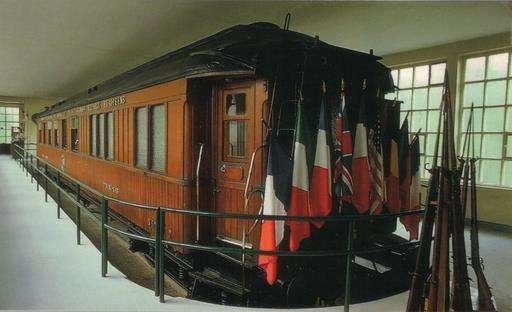
The fascinating story of the train and the location is not limited to the end of
WWI. Two decades later, Hitler who was much aggrieved to the conditions Germany had agreed to in 1918, used the same location and carriage to meet the French, when the French officially ended their fight against the Nazis at the outset of WWII and the French signed an armistice. This was Hitler’s revenge, as he sat
in the exact chair that Marshal Foch had sat in at the 1918 armistice when
Germany surrendered.
WWI. Two decades later, Hitler who was much aggrieved to the conditions Germany had agreed to in 1918, used the same location and carriage to meet the French, when the French officially ended their fight against the Nazis at the outset of WWII and the French signed an armistice. This was Hitler’s revenge, as he sat
in the exact chair that Marshal Foch had sat in at the 1918 armistice when
Germany surrendered.
The museum, which showcased the train carriage,
many artifacts and stories about the two historic armistices, is fascinating
and should definitely been included on any tour of this kind.
many artifacts and stories about the two historic armistices, is fascinating
and should definitely been included on any tour of this kind.
Day 3.
After the Cathedral in Amiens, we drove to the city of Arras. You will probably recognise the name, as the Battle of Arras in 1917 is well
documented and I’m sure you are aware COBI also has a diorama kit associated
with it.
We were fortunate as our visit to Arras coincided with great weather and many people were sat outside enjoying food and drinks in the city square. It was hard to imagine that during the battle, the city was totally flattened due to constant shelling and was later rebuilt in the same style. If you have time, a trip up the belfry tower overlooking central Arras is definitely worth the climb.
Next we headed to the Wellington Tunnels, aptly named as a crew of miners from New Zealand were brought over to build tunnels connecting medieval mines. These underground chambers were so large they could hold thousands of troops, safe from the shelling above ground.
Unfortunately for us, the tunnels and chambers and attached museum is a popular site and we hadn’t pre-booked. We couldn’t join the guided tour as it was full. I definitely recommend advance booking a tour to avoid missing out.
documented and I’m sure you are aware COBI also has a diorama kit associated
with it.
We were fortunate as our visit to Arras coincided with great weather and many people were sat outside enjoying food and drinks in the city square. It was hard to imagine that during the battle, the city was totally flattened due to constant shelling and was later rebuilt in the same style. If you have time, a trip up the belfry tower overlooking central Arras is definitely worth the climb.
Next we headed to the Wellington Tunnels, aptly named as a crew of miners from New Zealand were brought over to build tunnels connecting medieval mines. These underground chambers were so large they could hold thousands of troops, safe from the shelling above ground.
Unfortunately for us, the tunnels and chambers and attached museum is a popular site and we hadn’t pre-booked. We couldn’t join the guided tour as it was full. I definitely recommend advance booking a tour to avoid missing out.
Next stop was Ypres in Belgium. On the way we
made an unscheduled stop at some WWI cemeteries we saw next to the road. We
hadn’t planned to visit this site, but in this region there are literally
thousands of cemeteries for different armed forces. Some small, some extensive:
the British elected to bury their dead where they fell. No matter which route
you take, whether it’s a main road or a tiny country lane, you will pass cemeteries.
We stopped by Serre Road Cemetery (pictured below).
made an unscheduled stop at some WWI cemeteries we saw next to the road. We
hadn’t planned to visit this site, but in this region there are literally
thousands of cemeteries for different armed forces. Some small, some extensive:
the British elected to bury their dead where they fell. No matter which route
you take, whether it’s a main road or a tiny country lane, you will pass cemeteries.
We stopped by Serre Road Cemetery (pictured below).
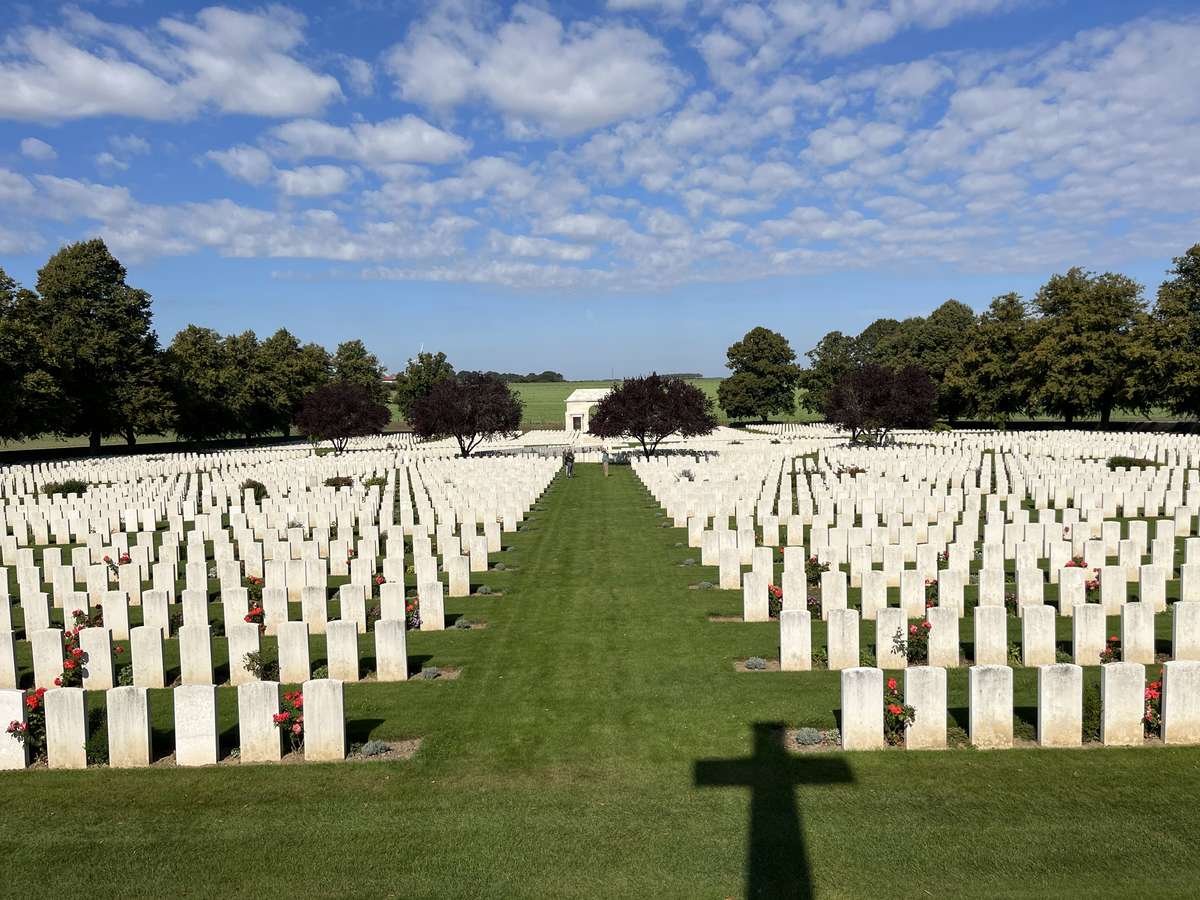
As with all of the cemeteries we visited, some gravestones would bear the name and regiment of the solder buried there. But as was often the case, just a regiment
is shown, as the individual couldn’t be identified.
Alongside graves with names are numerous graves of
unknown soldiers, by the time their body was recovered, it was no longer
possible to identify the individual, the nationality, or their regiment.
In Ypres, we also had some central accommodation which made our two day stay very easy as we could explore on foot and enjoy some nice restaurants.
is shown, as the individual couldn’t be identified.
Alongside graves with names are numerous graves of
unknown soldiers, by the time their body was recovered, it was no longer
possible to identify the individual, the nationality, or their regiment.
In Ypres, we also had some central accommodation which made our two day stay very easy as we could explore on foot and enjoy some nice restaurants.
Day 4.
Right in the centre of Ypres is the In Flanders Field Museum (pictured below). You can easily spend half a day in this extensive museum. Whilst in Ypres if you have
time, a walk around the medieval wall and moat surrounding the city is
definitely worthwhile.
time, a walk around the medieval wall and moat surrounding the city is
definitely worthwhile.
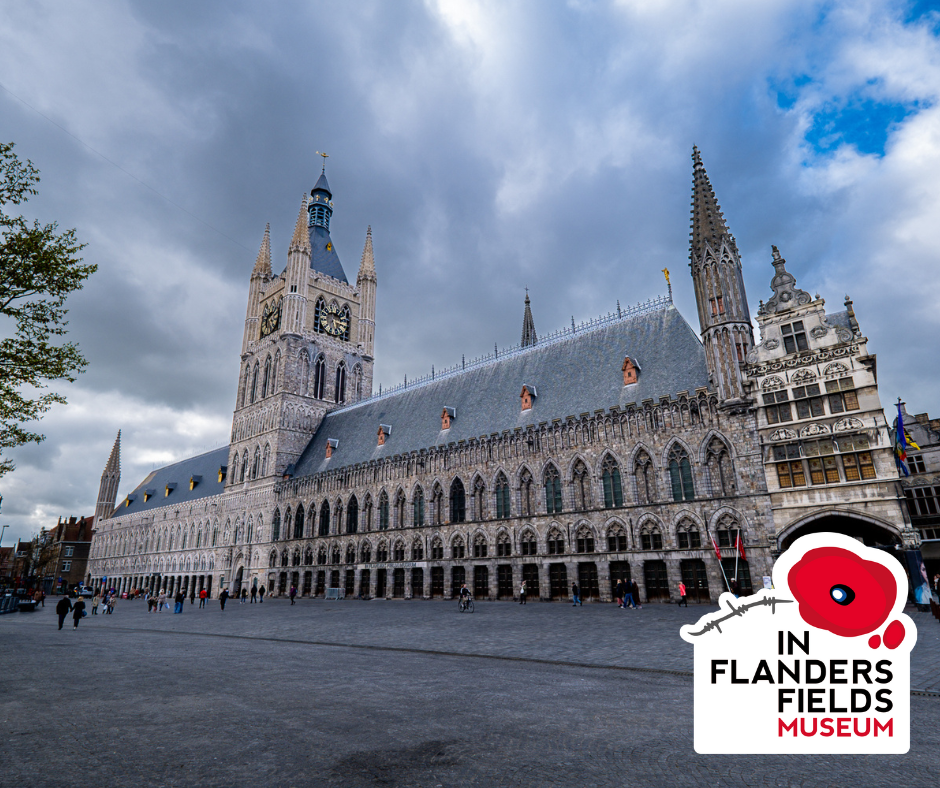
Don’t forget to witness the Last Post ceremony at Menin Gate, which is the gate
through which the troops in this area would march on their way to the front
lines and the trenches. A simple but moving ceremony, which is a salute to the
fallen soldiers. The ceremony has been performed every day since 1st
May 1929, apart from the period of German occupation during WWII.
through which the troops in this area would march on their way to the front
lines and the trenches. A simple but moving ceremony, which is a salute to the
fallen soldiers. The ceremony has been performed every day since 1st
May 1929, apart from the period of German occupation during WWII.
Day 5.
Time to squeeze in a few more visits in the morning before taking the Eurotunnel
back to the UK. We started by visiting the impressive Tynecot Cemetery (see image below) which is close to Ypres.
back to the UK. We started by visiting the impressive Tynecot Cemetery (see image below) which is close to Ypres.
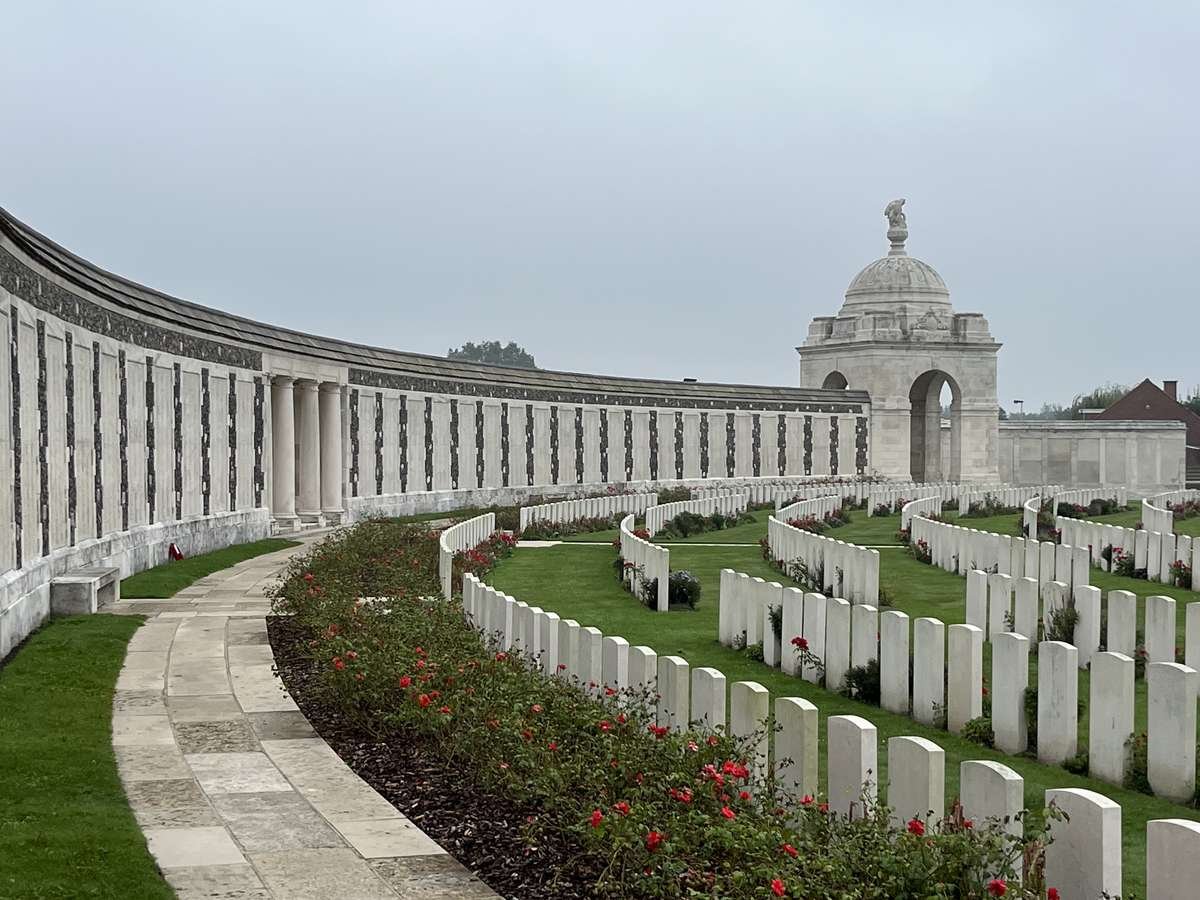
Next we stopped at the location where during Christmas of 1914 there was a brief truce, during which time the German and Allied troops collected their fallen soldiers, shared some drinks and kicked a football around. The troops from both sides were all young men, who wanted to enjoy life, but had answered the call of their respective countries to bear arms and fight for their country’s objectives. After sharing some food and drink, the very next day their battle resumed.
At this location some of the trenches from the opposing sides were only a mere 50 metres apart.
At this location some of the trenches from the opposing sides were only a mere 50 metres apart.
I hope you have found my overview of our tour of WWI sites interesting.
Have you visited any of these sites?
If you are considering such a trip and have any questions, don’t hesitate to ask.
Have you visited any of these sites?
If you are considering such a trip and have any questions, don’t hesitate to ask.
Have a great weekend!
James
James
PS. Want to know more about any of the sites I visited, here are some links for further reading:
Canadian Vimy Ridge Memorial:
https://www.cwgc.org/visit-us/find-cemeteries-memorials/cemetery-details/87900/vimy-memorial/
https://en.wikipedia.org/wiki/Canadian_National_Vimy_Memorial
Thiepval Memorial:
https://www.cwgc.org/visit-us/find-cemeteries-memorials/cemetery-details/80800/thiepval-memorial/
https://en.wikipedia.org/wiki/Thiepval_Memorial
Lochnagar Crater
https://www.lochnagarcrater.org/
https://en.wikipedia.org/wiki/Lochnagar_mine
The Wellington Tunnels
https://www.arraspaysdartois.com/en/remembrance/wellington-quarry-the-end-of-the-tunnel/
https://en.wikipedia.org/wiki/Carri%C3%A8re_Wellington
Serre Road Cemetery
https://www.cwgc.org/visit-us/find-cemeteries-memorials/cemetery-details/67200/serre-road-cemetery-no-2/
In Flanders Field’s Musuem
https://www.inflandersfields.be/en
The Last Post Ceremony
https://lastpost.be/
Tynecot Cemetery
https://www.cwgc.org/visit-us/find-cemeteries-memorials/cemetery-details/53300/tyne-cot-cemetery/
https://en.wikipedia.org/wiki/Tyne_Cot
Christmas Truce
https://en.wikipedia.org/wiki/Christmas_truce
Canadian Vimy Ridge Memorial:
https://www.cwgc.org/visit-us/find-cemeteries-memorials/cemetery-details/87900/vimy-memorial/
https://en.wikipedia.org/wiki/Canadian_National_Vimy_Memorial
Thiepval Memorial:
https://www.cwgc.org/visit-us/find-cemeteries-memorials/cemetery-details/80800/thiepval-memorial/
https://en.wikipedia.org/wiki/Thiepval_Memorial
Lochnagar Crater
https://www.lochnagarcrater.org/
https://en.wikipedia.org/wiki/Lochnagar_mine
The Wellington Tunnels
https://www.arraspaysdartois.com/en/remembrance/wellington-quarry-the-end-of-the-tunnel/
https://en.wikipedia.org/wiki/Carri%C3%A8re_Wellington
Serre Road Cemetery
https://www.cwgc.org/visit-us/find-cemeteries-memorials/cemetery-details/67200/serre-road-cemetery-no-2/
In Flanders Field’s Musuem
https://www.inflandersfields.be/en
The Last Post Ceremony
https://lastpost.be/
Tynecot Cemetery
https://www.cwgc.org/visit-us/find-cemeteries-memorials/cemetery-details/53300/tyne-cot-cemetery/
https://en.wikipedia.org/wiki/Tyne_Cot
Christmas Truce
https://en.wikipedia.org/wiki/Christmas_truce
 Skip to content
Skip to content


